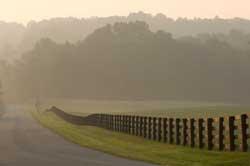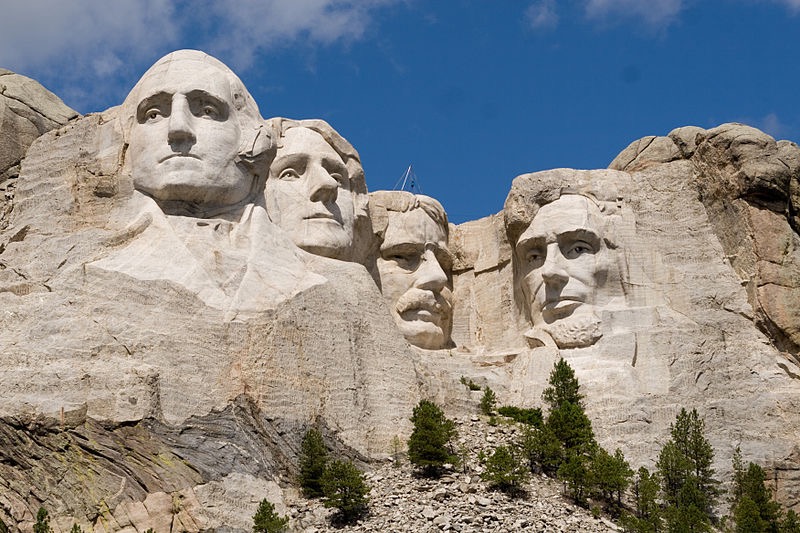To provide observations and information on the emerging fields of landscape scale conservation, heritage preservation, and sustainable community development.
Newsletter
Stay up-to-date with the latest nature, culture and community news.
We won’t spam you or share your information. Newsletters are sent approximately 10 times a year. Unsubscribe at any time.

Parks Stewardship Forum Features Living Landscapes
The most recent edition of the Parks Stewardship Forum (PSF), entitled “Politics, Practice, and the Management of Living Landscapes,” was guest-edited by Brenda Barrett and Eleanor Mahoney from the Living Landscape Observer. This issue examines the conservation of living landscapes at sites worldwide.

Take Notice: Trending for Large Landscapes
Every two years protected area managers, scientists, and every kind of experts on cultural and natural heritage gather at the George Wright Conference to present papers, engage in lively discussions and swap professional gossip at the bar. I always find these meetings to be the place to spot emerging ideas in the field. The 2017 meeting in Norfolk VA was no exception. So what is trending for large landscapes?

Federal Budget: First Look is not Promising
On March 16, 2017 the Whitehouse released its budget framework styled America First: A Budget Blueprint to Make America Great Again and the news was not great for programs that support large landscape conservation. For the FY 2018 the Department of Interior faces a proposed 12 % budget reduction and the Environmental Protection Agency is facing a 31% reduction. In general this brief document does not identify where the pain will fall except on the often pummeled National Heritage Areas. And while only the first step in the budget process, this proposal needs to be taken seriously.

And Now for the Next Four Years
For years I have told my family and friends that I am one issue voter and my one issue is the United States National Park Service. Which political candidate is most committed to America’s best idea? Who embraces the vision that our parks and protected areas are part of the nation’s common wealth and should reflect the complex stories that make up our country? What party recognizes that government service has value and that protecting public lands is a collective enterprise? While it is a bit early to predict exactly how landscape scale conservation will fare in the next four years under President-elect Trump, review of his proposed agenda is instructive.

Thirtieth Anniversary of the Columbia River Gorge National Scenic Area
Political compromise is unappreciated in our culture of late. It should not be so. Sometimes compromise works. One success story is the conservation of the Columbia Gorge. It stretches for some eighty miles from just east of Portland Oregon through the Cascade Mountains to the open hills beyond. Bipartisan collaboration conserved this majestic landscape.

Parks Stewardship Forum Features Living Landscapes
The most recent edition of the Parks Stewardship Forum (PSF), entitled “Politics, Practice, and the Management of Living Landscapes,” was guest-edited by Brenda Barrett and Eleanor Mahoney from the Living Landscape Observer. This issue examines the conservation of living landscapes at sites worldwide.

Take Notice: Trending for Large Landscapes
Every two years protected area managers, scientists, and every kind of experts on cultural and natural heritage gather at the George Wright Conference to present papers, engage in lively discussions and swap professional gossip at the bar. I always find these meetings to be the place to spot emerging ideas in the field. The 2017 meeting in Norfolk VA was no exception. So what is trending for large landscapes?

Federal Budget: First Look is not Promising
On March 16, 2017 the Whitehouse released its budget framework styled America First: A Budget Blueprint to Make America Great Again and the news was not great for programs that support large landscape conservation. For the FY 2018 the Department of Interior faces a proposed 12 % budget reduction and the Environmental Protection Agency is facing a 31% reduction. In general this brief document does not identify where the pain will fall except on the often pummeled National Heritage Areas. And while only the first step in the budget process, this proposal needs to be taken seriously.

And Now for the Next Four Years
For years I have told my family and friends that I am one issue voter and my one issue is the United States National Park Service. Which political candidate is most committed to America’s best idea? Who embraces the vision that our parks and protected areas are part of the nation’s common wealth and should reflect the complex stories that make up our country? What party recognizes that government service has value and that protecting public lands is a collective enterprise? While it is a bit early to predict exactly how landscape scale conservation will fare in the next four years under President-elect Trump, review of his proposed agenda is instructive.

Thirtieth Anniversary of the Columbia River Gorge National Scenic Area
Political compromise is unappreciated in our culture of late. It should not be so. Sometimes compromise works. One success story is the conservation of the Columbia Gorge. It stretches for some eighty miles from just east of Portland Oregon through the Cascade Mountains to the open hills beyond. Bipartisan collaboration conserved this majestic landscape.


